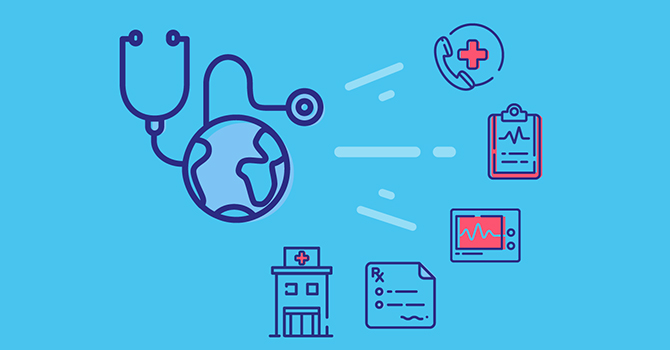Finest Healthcare RCM Practices to Boost Operational Effectiveness and Collections
Finest Healthcare RCM Practices to Boost Operational Effectiveness and Collections
Blog Article
A Comprehensive Overview on How Health Care RCM Works to Enhance Invoicing and Collections
Navigating the complexities of medical care income cycle monitoring (RCM) is essential for service providers aiming to boost their invoicing and collections procedures. The overview unloads the complexities of RCM, from client enrollment to balance dues monitoring, providing insights into optimizing each step. Incorporating sophisticated modern technology and standard treatments can substantially decrease case rejections and accelerate settlement cycles. Yet, real challenge depends on effortlessly merging these elements to enhance capital. As we check out the core elements and approaches that drive efficiency, one concern remains: just how can healthcare entities ideal position themselves to grow economically in an ever-evolving market?
Comprehending Profits Cycle Monitoring
Comprehending the ins and outs of Earnings Cycle Management (RCM) is vital for health care organizations aiming to optimize their economic performance. RCM is an important administrative feature that incorporates the entire monetary procedure of patient care, from the preliminary visit readying to the last settlement of the balance. It is an intricate procedure designed to determine, collect, and handle the profits from the services offered to individuals. Effective RCM guarantees that health care providers obtain prompt and exact payments, decreasing the threat of profits loss and enhancing money flow.
The RCM procedure begins when a patient timetables a consultation and prolongs via the individual's treatment trip, including billing and collections. An essential purpose is to minimize the time between obtaining and offering a solution repayment, hence improving the organization's economic health. RCM entails numerous functions such as person registration, insurance confirmation, fee capture, coding, asserts submission, settlement posting, and taking care of allures and denials.
Secret Elements of RCM
In the realm of Revenue Cycle Administration (RCM), understanding its crucial components is essential to attaining financial performance within healthcare companies. RCM is a thorough procedure that encompasses various phases, each crucial to making sure efficient invoicing and collections. The primary elements consist of patient registration, insurance policy confirmation, charge capture, coding, case entry, payment posting, and balance due management.


Once coded, claims are sent to payers, where precision is critical to prevent beings rejected or hold-ups - Healthcare RCM. Repayment uploading entails tape-recording the gotten payments, which enables the reconciliation of accounts. Finally, receivables administration focuses on tracking and attending to overdue claims, ensuring timely follow-up and resolution
Each element of RCM is interconnected, and inefficiencies in any component can disrupt the entire cycle. For that reason, grasping these aspects is essential for doctor to enhance earnings and boost their economic health and wellness.
Approaches for Reliable Payment

Systematizing payment treatments across the organization is one more vital approach. Developing clear standards for documents, coding, and entry assists keep consistency and compliance with regulatory requirements. Educating personnel frequently on these procedures makes certain everyone is up-to-date with the newest changes in payment codes and payer policies.
Exact fee capture is important in stopping income leakage. Implementing routine audits and monitoring systems permits the identification and adjustment of inconsistencies prior to they affect revenue. Additionally, keeping open lines of interaction with payers helps to promptly solve any type of disputes or misconceptions that may arise.

Last but not least, engaging people early in the invoicing process by find this giving clear quotes and instructional products regarding their monetary responsibilities can substantially reduce complication and enhance repayment timeliness. These strategies collectively contribute to an extra monetarily healthy and balanced and efficient payment system.
Enhancing Collections Procedures
Given the intricacies of clinical payment and the range of payer needs, boosting the collections procedure entails implementing calculated steps that make sure prompt and accurate settlement of services rendered. Automation tools can help in tracking insurance claim standings, sending prompt suggestions to patients, and handling rejections more efficiently.
Training personnel to recognize the nuances of insurance policies and billing codes is similarly necessary. This expertise empowers them to attend to payment inconsistencies rapidly and communicate efficiently with patients regarding their financial obligations. Additionally, clear and clear client communications are essential. Giving in-depth descriptions of costs and providing adaptable layaway plan can boost individual satisfaction and prompt settlements.
Routine audits of the collections process should be carried out to identify locations for enhancement and guarantee compliance with guidelines. By evaluating data, healthcare companies can identify patterns, prepare for possible issues, and adapt approaches as necessary (Healthcare RCM). Inevitably, a well-enhanced collections process not only sustains economic health and wellness however likewise contributes to a much more smooth experience for patients and official statement personnel alike
Optimizing Revenue Streams
Building upon the structure of a solid collections process, health care organizations can better boost their financial stability by purposefully maximizing profits streams. This entails a multi-faceted approach, starting with an extensive analysis of existing income resources to determine inefficiencies and locations for development. Using advanced information analytics tools allows companies to gain insights right into payer mix, person demographics, and service use patterns, enabling data-driven choices that boost earnings capture.
Implementing automated invoicing systems can substantially reduce errors and expedite claims refining, guaranteeing that earnings is accumulated extra successfully. Furthermore, enhancing payer contracts through normal negotiations can boost repayment prices and terms, straight impacting the bottom line. Expanding solution offerings, such as incorporating telehealth or health programs, can additionally draw in a more comprehensive person base, therefore boosting profits capacity.
One more important part is improving individual involvement and fulfillment, as completely satisfied people are more probable to adhere to therapy strategies and make prompt settlements. Using versatile payment options and clear payment methods can improve collections and foster person loyalty. Healthcare RCM. By adopting these strategies, medical care organizations can develop an extra resilient economic structure, guaranteeing continual growth and security in an ever-changing industry landscape
Verdict
Finally, health care Revenue Cycle Monitoring (RCM) plays an essential role in optimizing invoicing and collections processes by integrating vital parts such as patient enrollment, insurance coverage verification, fee capture, coding, claims entry, and accounts receivable administration. By utilizing innovative technology, systematizing treatments, and cultivating individual engagement, health care companies can substantially decrease case denials, speed up settlement cycles, and enhance capital. This detailed approach to RCM inevitably causes improved monetary performance and sustainability for medical care companies.
The RCM process begins when an individual routines an appointment and extends with the individual's care trip, consisting of payment and collections.Another important element is boosting patient interaction and satisfaction, as pleased people are Homepage more likely to adhere to therapy strategies and make timely settlements. Supplying flexible settlement options and clear payment techniques can enhance collections and foster patient commitment.In verdict, medical care Earnings Cycle Administration (RCM) plays an important function in enhancing invoicing and collections procedures by incorporating vital parts such as individual enrollment, insurance coverage confirmation, fee capture, coding, declares submission, and accounts receivable administration. By employing sophisticated modern technology, systematizing procedures, and promoting client engagement, medical care suppliers can considerably reduce claim rejections, speed up settlement cycles, and boost money flow.
Report this page